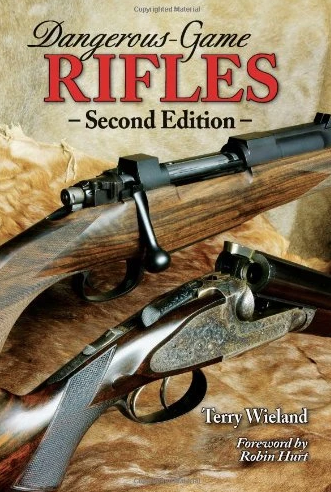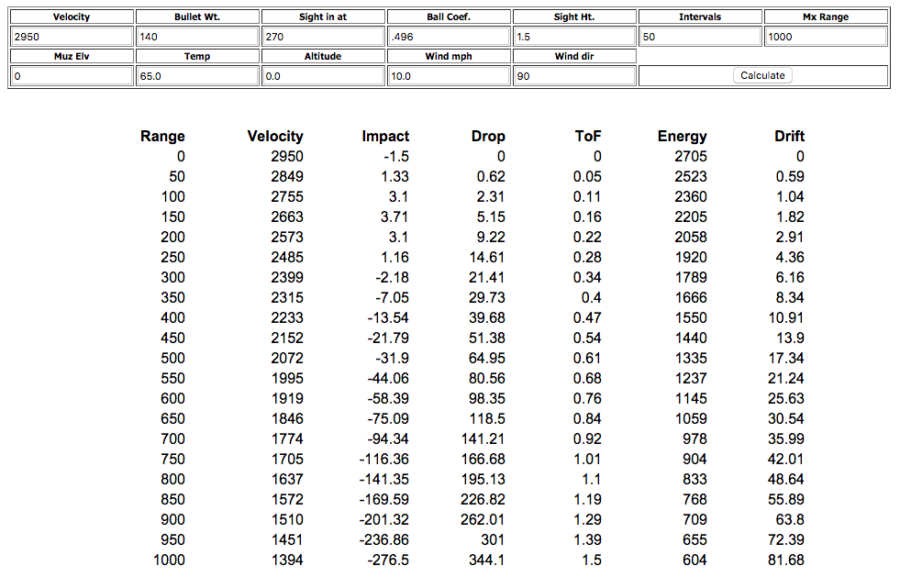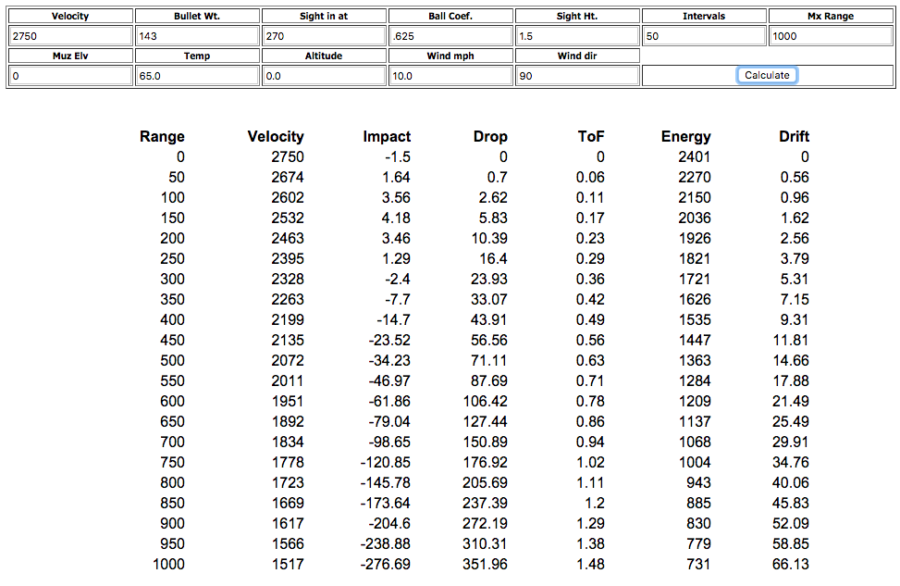Many riflemen are under the misperception that they have to spend thousands of dollars on a long-range rifle in order to shoot far. You don’t. Here are three cartridges that will make long-range shooting a breeze.
Too many riflemen suffer under the misperception that they need to spend $1,000 to $10,000 on a special long-range rifle in order to shoot far. You need at least a 26-inch barrel and a 20X scope and a .338 Lapua Magnum or 28 Nosler, right? Naw. Your deer rifle will suffice.
What You Need in a Long-Range Rifle
The only real requirement for long-range shooting is an accurate rifle and a high BC bullet. The longer, sleeker and more aerodynamically efficient the bullet, the farther it will fly before air drag slows it and gravity pulls it to ground. A high muzzle velocity helps but isn’t as important as high BC. A high-power scope is nice, but 10X will squeak you by surprisingly well. Don’t knock it until you’ve tried it. After all, 10X means objects appear 10 times closer, making a 1,000-yard target appear to be 100 yards away.
Let’s consider a typical .270 Winchester “deer rifle” with a 22-inch barrel. Such a setup will usually drive 140-grain bullets 2,900 to 2,970 fps. Let’s assume 2,950 fps for a reasonable average.
Next, let’s select a bullet with that desirable, high G-1 ballistic coefficient. Hornady offers a 140-grain SST rated .496. Nosler claims .496 for its AccuBond and Berger rates its 140-grain VLD Hunting bullet .487. Be aware that G-1 BC ratings for long-nosed, long boat-tailed bullets like these aren’t always 100 percent accurate, and BC change slightly from rifle to rifle, so your mileage may vary, so to speak.
Nonetheless, let’s assume the .496 BC is accurate and use it. You’re free to pick the Nosler or Hornady bullet; if their BC numbers are accurate, they’ll fly exactly the same. The Berger will be so close behind as to scrape their bottoms for most of the flight.
Now, to maximize our point-blank range, we’ll zero dead-on at 270 yards. That should put our bullets three inches high at 100 yards, peaking 3.7 inches high at 150 yards and falling four inches low at 325 yards. Not bad! We’re already extending our point-blank range to 325 yards. That means we can aim dead-center on the chest of a deer and strike it in the vitals from the muzzle clear out to 325 yards, a long shot for most hunters.
Ballistic Calculator Predicts Long-Range Rifle Potential
But we’re talking long-range rifle shooting here, so let’s see how this puny .270 Winchester handles the distance. Study the following ballistic chart and you’ll see just how much this bullet drops (under the Drop column), where it strikes (under the Impact column), how long it stays airborne (ToF column), remaining Energy and how far it is deflected in a right-angle, 10-mph wind (Drift column).
If you haven’t seen long-range numbers like these before, you might not know how to relate, so let’s compare a similar ballistic chart for the .338 Lapua Magnum throwing Hornady’s 285-grain ELD Match bullet with its incredible BC of .789. From a 27-inch barrel, this ought to generate a muzzle velocity of 2,750 fps—and a whole lot of recoil. So hold onto your hat . . .
Ballistics of the Long-Range Rifle “Hero,” The .338 Lapua Magnum
Note how the bigger bullet, even though it launches with 200 fps less velocity, shoots about 25 inches flatter at 1,000 yards and drifts a whopping 32 inches less. That’s what a high BC does for you. The 1,300 f-p more energy advantage in the Lapua is due both to the much, much heavier bullet coupled with the efficiency of that .789 BC. Clearly, this is the superior round for 1,000-yard shooting. But…
Rifles chambered in .338 Lapua Magnum aren’t a dime a dozen. Neither is the ammo; each cartridge will set you back from $2.60 up to $6 each. Loading your own should nearly knock that in half.
In contrast, a .270 Winchester cartridge will run $1 to $3 each. Figure $1.60 as a reasonable average to get some of these high-BC bullets.
Compare a Milder Long-Range Rifle Option: The 6.5 Creedmoor
Of course, there are long-range options that are less expensive than the .338 Lapua. An extremely popular one is the light-kicking 6.5 Creedmoor. Most of these are sold for $1 to $1.70 per round. They kick slightly less than a .270 Winchester. So let’s compare 6.5 Creedmoor ballistics to our .270 Winchester’s Berger 140-grain Match Hybrid Target bullet at BC. .618 is a good option, but we’ll work with the new 143-grain Hornady ELD-X with its impressive .625 BC. Once again, we’ll stick with our 270-yard zero to maximize point-blank range.
Here you can appreciate how the old .270 Winchester really measures up. Few of us think of it as a contender for long-range shooting, yet it hangs right in there with the 6.5 Creedmoor, the darling of the long-range set. Note the 1,000 yard impacts are identical. Wind deflection (Drift) is a lot less with the 6.5 bullet, and that’s because of its superior BC, which also preserves more of the 6.5mm bullet’s energy. This is why I keep preaching high-BC bullets. Their efficiency is a big, big deal.
The big .338 Lapua Magnum is the hands-down winner for long-range performance, but the ordinary .270 Winchester (center) runs hot on the heels of the 6.5 Creedmoor, our current long-range darling.
There are plenty of other traditional cartridges that will perform similarly to the .270 Win., including the .280 Remington, 7mm-08 Rem., and even the old .30-06. As this earlier post illustrates, the 7mm Rem. Mag. and .300 Win. Mag. are even better. But whatever you shoot can be pressed into long-range duty. Just shop for the highest-BC bullet your rifle will drive, then run some ballistic calculations and see what kind of trajectory curve you’re dealing with. Once you know that, you’re more than halfway home.
Final Ingredient for the Budget Long-Range Rifle
Here’s the final piece of the puzzle: a laser rangefinder. If you know the precise range to the target and your trajectory curve, you’re prepared to compensate. You can do this with a ballistic reticle, a dialing turret and even some judicious Kentucky Windage (hold-over, which works reasonably well to 500 yards).
What you don’t need is a .338 Lapua Magnum. It would be nice, but don’t stay home and sit on your hands if you don’t have one. Combine the best ammo (high-BC bullets) with your rifle and you’ll be ringing steel at 600, 700 and maybe even 1,000 yards—with almost no additional expense. Fun!
P.S. This doesn’t mean I’m advocating shooting at game at ridiculous distances. But training to shoot far helps you nail more reasonable shots. Once you’ve drilled a few targets at 600 yards, 300-yard shots will start looking like slam dunks.
For more from Ron Spomer, check out his website, ronspomeroutdoors.com
 In this book, firearms expert Terry Wieland explores the history of big-bore rifles for dangerous game, covers rifles and ammunition available today, examines controversies about killing power, and explains the nuances of big rifles and how to use them.
In this book, firearms expert Terry Wieland explores the history of big-bore rifles for dangerous game, covers rifles and ammunition available today, examines controversies about killing power, and explains the nuances of big rifles and how to use them.
The first edition of Dangerous-Game Rifles appeared in 2006, sold out quickly, was reprinted and sold out again. Since it publication, there have been significant developments in the world of big-bore rifles and ammunition. This revised and expanded second edition includes additional chapters on the making of big rifles, practice and usage, updated information on available rifles and ammunitions and more than 100 new photographs, many in color. Shop Now




